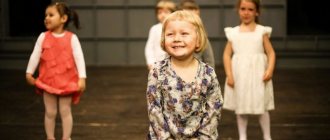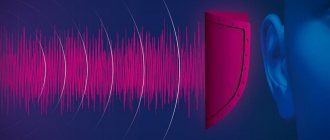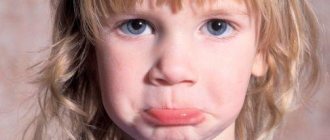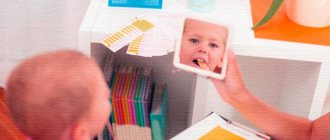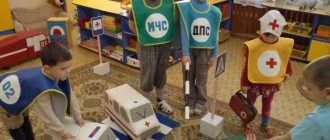A polymorphic disorder observed when pronouncing sounds is one of the types of dyslalia or burr, as this pathology is also called. The disease manifests itself as a disorder in the pronunciation of certain individual sound groups.
A similar diagnosis is established for children when they reach 5 years of age and with preserved intelligence, integrity of the organs of articulation and innervation. Burr is a common pathology in speech therapy, observed in more than 55% of children under 6 years of age, 30% of children under 8 years of age, and only 1% of the adult population.
Kinds
Impaired sound pronunciation is a common ailment, divided into several separate forms. The table below describes them all.
| Burr classification | Peculiarities |
| Organic | It is characterized by a congenital and acquired structure of a defect in the articulation apparatus with adequate regulation by the highest activity of the nervous system. |
| Functional | This is an acquired disease that occurs in cases where morphological pathology of the nervous system and organs of the speech apparatus is excluded. There are two types of it: motor and sensory. The first is characterized by a neuromolecular shift in the center of pronunciation, when the lips, tongue and cheeks move with some difficulty. Sensory is manifested due to shock in the parietal region, which is responsible for the reproduction of sounds. |
| Physiological | This form is also called transient, and it manifests itself in most of humanity; it easily goes away on its own in children under 5 years of age. |
| Monomorphic | This is one of the simplest violations of the pronunciation of individual sounds, for example, only whistling sounds. |
| Polymorphic | This is one of the complex forms of the disease, when a person cannot pronounce more than 4 sounds correctly and all of them can be from separate sound groups. |
Dyslalia is a disease of the passive and active oral speech apparatus, which includes the lips, tongue, teeth, cheeks, and palate. But disturbances in the pronunciation of sounds can also occur due to structural and functional diseases.
This is why dyslalia occurs:
- articular-phonetic;
- acoustic-phonemic;
- articular-phonemic.
Also, this disease in speech therapy is classified according to phonetic type and depends on problematic sound pronunciation:
- Sigmatism is a more common form when a person has problems pronouncing whistling and hissing sounds.
- Impaired pronunciation of sonorous sounds. There are 4 separate forms: lambdaism, pralambdaism, rhotacism, pararotacism. The first form is characterized by difficulty pronouncing the sounds “l” and “l”, and rhotacism – by the sound “r”.
- Disturbances in the pronunciation of back-lingual sounds, such as “k”, “k”, “g” and “g” and others.
- Yottacism is characterized by disturbances in the pronunciation of letters containing the sounds “th”, “ya”, “yu”.
- Voicedness defect, when a person replaces voiced consonant sounds with voiceless ones and vice versa.
- A defect of softness, when there is an unconscious replacement of soft consonants with hard ones and vice versa.
In addition to types and forms, experts divide sound pronunciation disorders into several levels:
- This is when a child is completely unable to pronounce sounds. The child is unable to independently pronounce sounds in phrasal speech, in individual words, in isolation.
- A child can pronounce a sound correctly in isolation in words and even when repeating phrases, but can distort or miss in words and phrases.
- The child pronounces the sound in isolation, but mixes it with another similar in articulation or sound.
It is very important to accurately establish the level of the disease, because the nature of the specialist’s further work depends on this: setting sound - the first level, automating - the second level, differentiating with another sound - the third level.
Types of sound reproduction pathologies and clinical manifestations
A child can reproduce any sound incorrectly, but more often children pronounce whistling sounds poorly: ([s], [z], [ts]), hissing sounds ([w], [zh], [ch], [sh']), sonorants ( [p], [l]). These sounds have a complex structure and require sound pronunciation skills. Sound units that are easy to reproduce are less likely to be disrupted. These include − [m], [n], [t], [p]. These sound units appear at an early stage in the formation of speech function.
Types of sound reproduction disorders:
• absence of a sound unit; • sound change; • replacing one sound unit with another; • mixing sound units.
The absence of a sound unit manifests itself in the form of loss of sound in a word. It disappears at the beginning, in the middle or at the end of the word. Example: pocket - kaman, different - azny, Cupid - Amu.
Sound distortion is characterized by an altered pronunciation of a sound unit that does not correspond to the Russian phonetics system. This form of GSD (general speech impairment) includes several types of distortion:
- Change of sound unit [r]: velar or uvular [r].
- Distortion [s]: interdental [s].
- Modified [l]: bilabial [l].
In some patients, speech dysfunction is manifested by the replacement of sounds. Example: compote - tomkot, lip - oak, dusk - fumrak, cracker - fuharik, house - tom, hummocks - gochki, frame - ryama, lamp - lamp. Sound confusion is characterized by the patient confusing sound units with each other. Example: cap - boot, sleigh - shanochki. In this case, the child pronounces and distinguishes the sounds [s] and [sh] separately and correctly.
Types of dyslalia:
- Mechanical (pathologies of the articulatory apparatus, congenital diseases).
- Functional.
- Physiological (norm for patients under 5 years of age).
- Monomorphic sound pronunciation disorder is the incorrect reproduction of sound units belonging to the same group.
- Polymorphic sound pronunciation disorders are errors in the reproduction of more than four sound units belonging to different groups.
Symptoms
Polymorphic disorder of sound pronunciation is an acute form of the disease, manifested in the form of disturbances in normal human behavior. Symptoms appear constantly, increasing every day.
Observing a person with similar disorders, you may notice:
- unstable mood, changes several times a day;
- speech becomes devoid of any meaning;
- listening to the patient, you can notice that from time to time he is delusional;
- hallucinations, the patient says that someone or something is touching him, hears extraneous sounds and voices.
Often such disorders strongly resemble paranoid psychosis, depressive disorders, schizophrenia, and delusional disorder.
People with disabilities experience disorientation, but self-identification is preserved. The patient's concentration decreases. Partial darkening of consciousness is observed.
Symptoms of disturbances in the pronunciation of sounds can be represented by replacement, omission, mixing and distortion of sounds:
- Pass. If the sound drops out completely in any part of the word.
- Replacement. Persistent replacement of one of the sounds by another.
- Mixing. The child constantly confuses two correctly pronounced sounds in the stream of speech.
- Distortion. This is an irregular pronunciation, the use of sounds that are completely absent in the phonetics of the Russian language.
Reasons for appearance
Polymorphic dyslalia can occur in children due to functional and mechanical disorders.
The main causes of the disease are:
- incorrect structure of the tongue;
- congenital pathologies, which include: cleft palate, cleft lip;
- improperly formed bite, uneven dentition or missing teeth;
- narrow or, conversely, high sky;
- underdevelopment of bones in the face;
- short bridle.
Dyslalia can also manifest itself due to functional changes:
- delay in speech development;
- genetic predisposition, when the jaw and articular apparatus are not properly developed;
- the child imitates the speech of other people;
- mental retardation;
- if family members speak different languages;
- lisping imitation of a child's speech;
- if phonemic hearing is poorly developed;
- poor health: weak immunity, frequent colds;
- learning foreign languages by children under 5 years old.
Polymorphic disorder of sound pronunciation is an ailment that can result from physiological problems. This phenomenon is common in preschool children and is associated with an immature articulatory apparatus.
Parents of children under 6 years old should not worry. But older children should be able to pronounce all sounds correctly; if there are problems, then you should seek help from a speech therapist.
Etiological causes of speech dysfunction
The reproduction of sounds is disrupted due to damage to brain structures, improper development of the articulatory apparatus, as well as living in an uncomfortable social environment. These main reasons can greatly influence the formation of speech function. If a child lives with parents who pronounce sounds and words incorrectly or do not speak at all, then speech formation occurs incorrectly.
Speech often develops with a defect due to diseases of the brain. Damage to brain tissue can be caused by various injuries during childbirth or during the life of the child. Birth trauma occurs due to difficult and prolonged labor, as well as rapid labor. The brain can be damaged during prolonged hypoxia. Hypoxic damage is provoked by entanglement of the umbilical cord, prolonged labor, fetoplacental insufficiency, partial placental abruption, and increased uterine tone during gestation.
Etiology of abnormal development of the articulatory apparatus:
- High, flat or low palate - the patient is unable to position the tongue correctly to produce sounds.
- Plump lips, drooping or short lower lip – improper lip formation makes it difficult to articulate correctly during speech.
- Underdevelopment of the jaws (cleft lip, cleft lip even after surgical correction, malocclusion).
- Altered dentition – diastema (large gaps between teeth), double row of teeth and other pathologies.
Speech is also formed incorrectly when sounds are perceived incorrectly. Often, the development of speech function is strongly influenced by a somatic illness that worsens in a child before the age of 5-7 years.
To prevent improper development of speech function, you should plan your pregnancy and reduce the likelihood of infectious diseases during pregnancy. During the period of speech formation, it is important to develop the baby’s speech and correct sound pronunciation if there are disturbances in the reproduction of sounds.
Diagnostics
Polymorphic dyslalia or sound pronunciation disorder is a disease that should be correctly distinguished from other speech defects. More often than not, parents are concerned about the fact that their child, who cannot pronounce certain sounds well, will be laughed at by his peers. That is why they come to see a speech therapist.
The cause may not necessarily be dyslalia; other speech problems are often observed:
- dysarthria;
- phonetic-phonemic underdevelopment;
- general speech underdevelopment.
Only a speech therapist can make an accurate diagnosis and determine the cause of incorrect pronunciation.
He will carry out several diagnostic stages:
- Initially, phonemic hearing is checked and functional tests are carried out. To do this, the child must repeat all the words spoken by the speech therapist or tell what is shown in the picture. Words and pictures are specially selected so that all sounds localized at the beginning, middle and end of words are covered.
- Additional clarifying tests must be carried out, thanks to which it is possible to exclude any other speech defects.
- If the case is advanced, the speech therapist may require a child’s card, which describes the entire history of the disease. Additionally, opinions from specialized specialists may be required: psychologist, otolaryngologist, neurologist.
After all the tests have been completed, the speech therapist draws up a plan for further activities with the child. The plan is individually selected for each child, because the stages of the disease and the type may be different. It is necessary to determine in what sequence the pronunciation of sounds will be corrected.
Often, disturbances in the pronunciation of sounds can be part of other more complex speech disorders, such as dysarthria, alalia and others, so it is important to undergo a comprehensive examination and make a diagnosis in time to prevent complications.
Prevention
Polymorphic disorder of sound pronunciation is not a final verdict, because preventive methods will help avoid such a diagnosis.
For prevention you should:
- from the very first years of life, actively develop the child’s speech;
- do not coo with the baby, but pronounce all words clearly when talking to him;
- read as many books as possible to your child;
- develop fine motor skills;
- actively develop the baby intellectually;
- play games that help develop phonemic awareness;
- motivate the child to pronounce each sound correctly and clearly;
- if anatomical changes are observed, they should be treated in a timely manner.
If parents notice that a child cannot pronounce a sound correctly, they should not try to help him on their own. Sometimes such help can aggravate the situation, and even an experienced specialist will need a lot of time to correct it.
All problems should be identified before school and eliminated. Many children with incorrect pronunciation of sounds may have problems with school learning, academic performance, and relationships with peers.
Specifics of correction of sound pronunciation disorders in primary schoolchildren with dysarthria
Zaitseva Yulia Dmitrievna – student of the correspondence department of the master's program at Smolensk State University.
Abstract: Speech development is one of the most significant tasks in raising and educating children, since speech is of great importance in the overall development of children. Timely and correct development of speech is interconnected with the formation of all higher mental functions of the child. The purpose of the article is to identify problems in the sound-speech development of children in order to find ways to correct and influence the speech development of primary schoolchildren by organizing a diagnostic experiment using special speech therapy techniques. As a result, we will be able to build a model of comprehensive support for children with dysarthria within the educational system.
Key words: Dysarthria, speech therapy, unity of body functioning, comprehensive support system, method of dynamic electrical neurostimulation.
To ensure normal speech communication, correct sound pronunciation is necessary. The concept of “pronunciation side of speech”, or “pronunciation”, covers the phonetic design of speech and at the same time the complex of speech motor skills by which it is determined. Such skills include the skill of speech breathing, voice formation, reproduction of sounds and their combinations, verbal stress and phrasal intonation. When the pronunciation side of speech is violated, defects in the phonetic design of speech occur [3].
The most common speech disorder today is the erased form of dysarthria. With erased dysarthria, most consonant sounds are distorted or not pronounced at all. Insufficiently clear speech complicates relationships with others and can cause other speech defects, which affects the child’s personality. The system of correctional work to educate children in correct sound pronunciation is based on the psychological and pedagogical approach developed by R. E. Levina. This approach involves taking into account the correlations of disorders in the system of speech activity and their relationship with other aspects of the child’s psyche.
The problem of dysarthria was studied by O.V. Pravdina, E.M. Mastyukova, L.V. Lopatina, G.V. Chirkina, O.G. Prikhodko, E.N. Vinarskaya, E.F. Arkhipova and other scientists, whose works became the methodological and theoretical basis of this study.
On the basis of MAOU Secondary School 28, in a group of six children of primary school age with a mild degree of pseudobulbar dysarthria, a confirmatory experiment was conducted. Based on its results, general speech underdevelopment was revealed in five children, and phonetic-phonemic speech underdevelopment in one child [4].
To effectively correct sound pronunciation in this group, work should be carried out in the following directions:
- correction of the motor sphere:
— development of general motor skills: smooth movements of legs and arms; ability to maintain balance; work on spatial orientation, gymnastics of the muscles of the shoulder girdle and neck.
- fine motor skills: smoothness, precision of movements, relieving spasticity of the hand muscles, coordination of speech with the movements of the fingers.
- normalization of the work of the muscles of the articulatory apparatus: gymnastics of the articulatory muscles, relaxation, relieving tension of the tongue, increasing the range of its movements, strengthening the muscles of the tongue that allow it to hold the tip up, stretching the hyoid frenulum, developing lip mobility.
- development of motor functions of the articulatory apparatus: developing differentiated movements of the lips, developing the ability to relax the muscles of the tongue and keep it wide, developing mobility and differentiated movements of the tongue, strengthening the muscles of the tongue and practicing lifting the tongue upward, the ability to give the tongue the shape of a cup and direct the air stream in the middle of the tongue , create kinesthetic sensations of tongue movements, develop control over tongue movements, train switchability between articulatory patterns [2].
- development of facial muscles: gymnastics of facial muscles, increased mobility of eyebrows, lips, kinesthetic sensations from various facial pictures, strengthening the connection between emotion and facial expressions.
- phonetics correction
— correction of sound pronunciation: staging, automation and differentiation of disturbed sounds.
- development of the prosodic side: development of correct diaphragmatic breathing, a smooth, long, continuous air stream, development of a long speech exhalation, work on the intonation coloring of speech, normalization of the tempo-rhythmic side of speech.
- correction of phonemic processes
- development of phonemic hearing of hissing and whistling sounds, sonors, determination of the sign of sonority - deafness, softness - hardness.
- formation of correct sound analysis of polysyllabic words: the ability to isolate the first and last sound in words, determine the sequence and number of sounds in a word, select words with a given sound, its position and number of sounds, do a complete sound analysis of words, select words with a given syllable, their position and number of syllables, do a complete syllabic analysis of words, determine the number, sequence and place of a word in a sentence.
For a child with phonetic-phonemic speech underdevelopment, it is necessary to implement similar areas of work regarding the motor sphere, phonetics and phonemic processes; in addition, it is important to further develop the lexicogrammatical structure of the child’s speech [6].
With dysarthria, the disturbance of sound pronunciation is polymorphic in nature. In addition, due to the presence of neurological symptoms such as spasticity, hypotonia or dystonia, overcoming phonetic-phonemic disorders poses significant difficulties for a speech therapist [5].
In order to identify the characteristics and state of sound pronunciation in primary schoolchildren with dysarthria, a study was conducted. The examination of sound pronunciation was carried out using experimental techniques. The specialized literature presents a wide variety of material for examining the sound aspect of speech in children from 7 years of age. In our experiment, the supplemented technique of O.B. was used. Inshakova, because it allows you to cover all groups of sounds and is designed for children of primary school age.
As a result of applying the methodology, the following results were obtained. Sound pronunciation disorders in primary school children with dysarthria syndrome are polymorphic in nature in 82% of children.
The first stage of the study was to control the articulatory praxis of primary school children with dysarthria. The average age of the subjects was 9 years. The children were asked to perform a set of diagnostic tests.
As a result of the experiment, the following results were obtained. Of the total number of subjects, including 16 children of primary school age with dysarthria, 7 cases of spastic type disorders, 6 cases of hypotonic type, and another 3 cases of articulatory motor disorders of the dystonia type were identified.
Let's conduct a qualitative analysis of the results. All subjects found it difficult to perform articulatory tests. Some children had tense, compressed lips, a thick, non-pronounced tip, an inactive tongue, pulled back in a lump. In one child, the close pharyngeal reflex was clearly manifested; in the second, the tongue had a bluish-violet color, with frequent restlessness of the tongue when stressed. Also, in many cases, children experienced language deviation.
Others, on the contrary, experienced muscle weakness and flaccidity, and abundant hypersalivation. The tongue was thin, located at the bottom of the mouth, flaccid, the tip of the tongue was inactive. With functional loads, muscle weakness increased.
Some subjects showed changing tone of the facial and articulatory muscles.
The second stage involved directly examining the state of sound pronunciation of primary schoolchildren with dysarthria. It is worth noting that sound pronunciation in dysarthria is important to study not in isolation, but as part of words. As a result, in almost 87.5% of cases, the violation of sound pronunciation was polymorphic in nature. That is, in 14 out of 16 children several groups of sounds were impaired. And only two from the study group had only one type of pronunciation sound distortion - rhotacism.
In 87.5% of cases, several groups of sounds are simultaneously impaired in children, and in 57.14% of this number more than three groups of sounds are impaired.
Among the distortions, the most common are interdental and lateral pronunciation of whistling, hissing sounds and the sound [r], interdental, lateral, lower pronunciation of front-lingual [t], [d], [n], [l]. In cases of spastic dysarthria, a softened pronunciation of all sounds is observed due to tension in the middle back of the tongue. One girl had no sound [x], which is extremely rare in speech therapy practice. The study also confirms the opinion of L.V. Lopatina that the most common for [р], [р'] is velar rhotacism.
The conducted research allowed us to conclude that in dysarthria, the violation of sound pronunciation is polymorphic in nature. In addition, due to the presence of neurological symptoms such as spasticity, hypotonia or dystonia, overcoming phonetic-phonemic disorders poses significant difficulties for a speech therapist.
It is important to emphasize that when working with children with dysarthria, an integrated approach is needed, which would allow improving the methods of speech therapy work by using such means of correction that will not disrupt the natural processes of the body, will not have side effects on other organs and systems, and will not cause harm to the child. any discomfort will not cause the child’s body to become accustomed to external corrective influences.
The joint efforts of medicine and special pedagogy and psychology should be coordinated and aimed at a single task to overcome neurological symptoms and normalize the sound pronunciation of children with dysarthria.
Analysis of classical correction programs (for example, T. B. Filicheva, developed jointly with N. A. Cheveleva, G. V. Chirkina, T. V. Tumanova) showed that the authors consider the initial task to be the formation of differentiated pronunciation through the development of mobility of the articulatory apparatus using methods massage of the face, lips, hard palate. It is noted that the method of passive gymnastics is quite effective in working with children with dysarthria.
E.F. Arkhipova proposed her own individual methodology, which includes 20 articulation exercises with functional load, which has proven itself to be an effective means of overcoming dysarthria.
A significant place among the new correction methods is given to reflexology, part of which is the method of dynamic electrical neurostimulation (DENS). This is a modern method of hardware therapy and prevention (Registration certificate of the Federal Service for Surveillance in Healthcare and Social Development of the Russian Federation No. FS-2005/004 dated March 4, 2005) [4]. DENS is integrated into the system of practical speech therapy in medical, treatment-and-prophylactic, and educational institutions.
The device affects sensitive points connected by conductive pathways to the central nervous system. It affects the speech zones, generating a signal similar to a neuroimpulse. Along the pathways, the impulse goes to the central nervous system and then to the corresponding parts of the peripheral speech system. Working on the principle of feedback, DENS provides the most important correctional principle of individual focus. Stimulation is carried out in courses of 10 to 15 days, depending on the severity of the speech defect.
We have developed a speech therapy course, the purpose of which is to correct sound pronunciation in primary schoolchildren with dysarthria against the background of dynamic electrical neurostimulation.
To achieve this goal, the following tasks must be solved:
- normalize the tone of articulatory muscles;
- develop articulatory motor skills;
- place and consolidate sounds in speech.
We classified the following tasks as correctional and developmental ones:
- develop phonemic awareness;
- develop speech breathing;
- develop voice power.
For correctional education:
- eliminate manifestations of general speech underdevelopment in children with dysarthria;
- develop the skill of controlling your own speech. [1]
Summarizing the above, it is worth noting that the use of the method of dynamic electrical neurostimulation in a complex treatment for dysarthria can make it possible to recommend the method for use by doctors and teachers who have completed a training course in order to increase the effectiveness of correctional work. The inclusion of DENS in a complex of other methods and means of speech therapy can shorten the time of correction, quickly achieve an improvement in muscle tone and the quality of mobility of the articulatory apparatus; accelerating the rate of normalization of sound pronunciation and the functional state of the entire nervous system as a whole.
Bibliography
- Arkhipova E.F. Correctional and speech therapy work to overcome erased dysarthria in children. –M.: AST; Astrel, 2015.C. -254
- Burachevskaya O.V., Burachevskaya N.I. Dynamic electrical neurostimulation in the correction of speech disorders // School pedagogy, 2021. No. 2(9). pp. 5-10.
- Vorobyova T. A. Vorobyova P. A. Breathing and speech. Working on breathing in a comprehensive technique for correcting sound pronunciation. – St. Petersburg: “Litera”, 2014. – P. 112
- Kosinova E. M. Gymnastics for speech development. – M.: “Library of Ilya Reznik”, “Eksmo”, 2013. - P. 49
- Kushnina T.V. Preliminary results of using dynamic electrical neurostimulation in children with dysarthria and alalia // Dynamic electrical neurostimulation therapy. Evolution continues: Sat. materials international. Symposium "DENAS MS". Ekaterinburg, 2014. - pp. 172–179.
- Speech therapy diagnostics and correction of speech disorders in children. - St. Petersburg, 2015. -P.234 x: manual for teachers. – M.: Education, 2016. – P. 415.
Interesting article? Share it with others:
Correction methods
Once the cause of speech defects is precisely determined, it will be possible to accurately determine the correct treatment path. For example, mechanical dyslalia can only be cured through surgery. The operation will help remove anatomical defects that interfere with the normal functioning of the speech apparatus.
Complex dyslalia in preschool children is treated with:
- articulatory gymnastics;
- development of hearing sensitivity;
- speech therapy massage;
- development of micromotor skills;
- techniques for proper breathing during a conversation.
Speech therapy assistance
After the first visit to a speech therapist, the specialist develops an individual plan of work with each child. Classes should be held at least 2 times a week, and preferably up to 3-4 times, then the result will appear faster. The child’s parents should also help by regularly performing a special set of exercises at home.
Speech correction by a speech therapist takes place in several stages:
- Preparatory. A speech therapist conducts classes that help better develop memory, thinking and attention processes. The child learns to compare and conduct independent analysis. The specialist helps develop phonemic awareness, teaches sound analysis and develops speech breathing. At this stage, the child performs exercises that help him pronounce sounds correctly: with his lips, cheeks, tongue, palate and jaws.
- At the next stage, the specialist teaches the child to speak correctly. The exercises are carried out in a playful way; if necessary, additional speech therapy probes can be used. You can play no more than 2 sounds at the same time.
- Automation of sounds. The child must learn to automate sounds in words, syllables, phrases and texts, and a little later in live speech. To consolidate the results, parents need to repeat the exercises daily at home.
- The final stage. The child must learn to differentiate the new learned sound from the one with which he previously replaced it. This is necessary in order to exclude a recurrence of the disease, so that the burr does not return.
To achieve results and cure polymorphic dyslalia, you need to exercise regularly for six months. As practice shows, a speech therapist can easily cope with the problem, and the child will be able to speak correctly at school.
But parents need to remember that only the harmonious work of adults, a specialist and a positive atmosphere will prevent complications.
Home gymnastics
Parents and children can do simple gymnastics every day at home:
- move your tongue left, right, then clockwise and back, stretch your tongue to your nose and chin;
- fungus exercise - suck your tongue to the roof of your mouth, and then open and close your mouth;
- movement of the lips - up, down, smile, vibrate, stretch into a tube;
- close and open your mouth as wide as possible, stretching the jaw ligaments;
- speak tongue twisters.
Exercises can be performed morning and evening, spending only 5-10 minutes.
Speech therapy massage
This type of massage helps stimulate articulatory muscles, has a relaxing effect, improves blood flow in soft tissues, and trains the muscles that are responsible for the formation of the speech apparatus, causing them to function in a coordinated and correct manner.
Massage has a reflex effect on the entire lymphatic system, improves the passage of lymph through the vessels. The elasticity of muscle fibers, their strength and the volume of contractile function are significantly increased, and their activity is better restored after exercise.
The massage is carried out in a warm, ventilated room. The massage is carried out in cycles of 10, 15 or 20 sessions; it is better to carry out the procedure every other day. After a month's break, you can repeat the procedure.
During the massage, the child can lie on his back with a cushion under his neck, or he can also sit half-sitting in a chair with a high headrest.
It is more effective to use the classic type of massage, which involves light stroking, kneading, rubbing, and vibration. You can perform the massage with your hands, a toothbrush with soft bristles, rubber spatulas and others.
There are also acupressure, hardware and probe types of massage, but they must be carried out by a specialist so as not to cause harm.
Possible complications
If timely treatment is not started, disturbances in the pronunciation of sounds can become a manifestation of a mental illness, for example, schizophrenia. This development of events is indicated by persistent symptoms that appear regularly for 3 months. The earlier therapy is started, the more favorable the prognosis will be.
Polymorphic disorder of sound pronunciation is a disease that can be easily cured without any complications or consequences. During the period of acute disorder, the patient is socially disoriented and can be dangerous to himself and others, so he needs constant monitoring and help.
Polymorphic disorder is a common problem for young parents. Children with sound pronunciation disorders require timely correction, otherwise the disease may cause a lag in the development of speech function.
If there are even the slightest signs of illness, you should urgently seek advice from a speech therapist. The specialist will select a set of classes and will be able to improve the quality of the child’s speech without consequences or complications.
Preventive actions
To prevent the occurrence of sound pronunciation disorders, it is necessary to carry out prevention. Women are advised to plan their pregnancy. During pregnancy, you need to avoid stress, hard work, and contact with infections. If there is placental abruption, increased uterine tone, or a decrease in the number of movements, you should contact a gynecologist. After the birth of a child, you need to monitor the baby's condition. If a child has a reduced sucking reflex, increased or decreased tone of the arms and legs, or severe crying, you should definitely consult a doctor.
Throughout the child’s life, head injuries must be avoided and chronic and infectious diseases treated in a timely manner. Treatment and rehabilitation are indicated for children with cerebral palsy. During the period of formation of speech function, children should be constantly engaged, pronounce words clearly, read poems and books, and correct the pronunciation of incorrectly pronounced words. If speech delay occurs, the child is advised to undergo timely speech correction.

